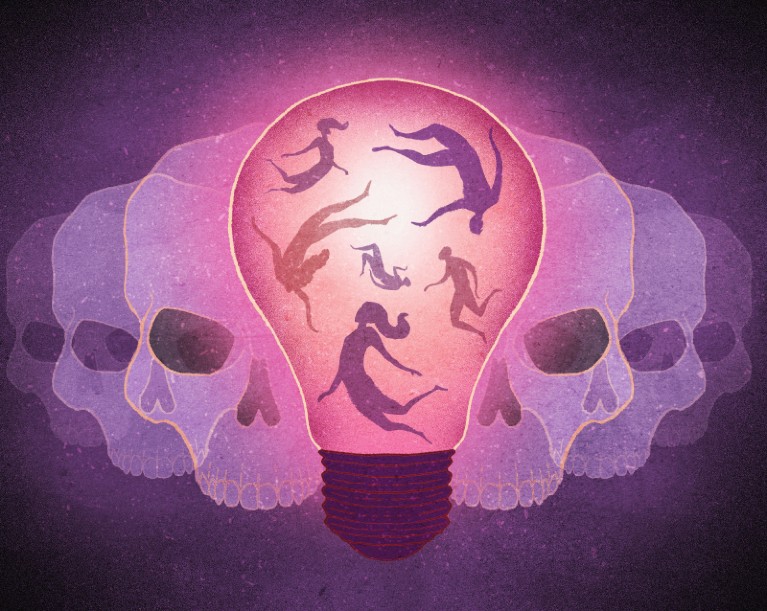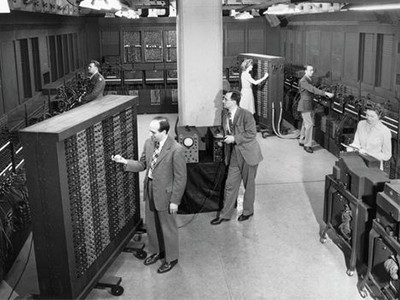
American Lucifers: The Dark History of Artificial Light, 1750-1865 Jeremy Zallen Univ. North Carolina Press (2019)
Edison Edmund Morris Random House (2019)
Beyond steam engines and power looms, the Industrial Revolution spawned innovation in artificial lighting — for city streets, lighthouses, railway carriages and mills. Incremental improvements, from whale oil to gas, kerosene and electric carbon-arc technology, culminated in 1879 in a practical incandescent light bulb created by prolific US inventor Thomas Edison. These advances were no straightforward march of progress, as two books — Jeremy Zallen’s American Lucifers, and Edison by the late Edmund Morris — reveal.
American Lucifers begins a century before Edison’s birth, in 1750. Zallen, a historian, explores the human costs of artificial lighting from then until 1890, concentrating on people producing and using fuel in the United States, and their links to South America, Britain and the Caribbean. Viewing energy in terms of class, he examines the fate of whalers, enslaved people distilling pine resin to make turpentine, children in match factories, petroleum refiners and miners of coal and copper.
How pandemics shape social evolution
The international networks he examines are convoluted. Jewish candle-makers in Rhode Island, he argues, were culpable for the exploitation of workers who used their candles in Caribbean sugar plantations, New England cotton mills and Pennsylvania coal mines. Later, coal from those mines fed steam engines that powered electric lights. The candles themselves were made using either whale oil or tallow from livestock — cattle and hogs that “until the 1930s were mostly raised by farmers using kerosene lamps”. Zallen’s case studies also range over Argentinian slaughterhouses, phosphorus-match factories in Liverpool, UK, and a Montana copper mine.
The benefits of artificial light get short shrift. The “whole electric edifice”, Zallen argues, was predicated on “a century of steadily industrializing slave labor” along with the exploitation of women and children who, although not enslaved, worked at best for starvation wages. Yet such assertions oversimplify. In the nineteenth century, real wages in the United States increased. Factories demanded literacy and numeracy, which is one reason children were compelled to attend school. Nor is women’s history during this era one purely of exploitation and “rigid expectations”, as the spread of women’s colleges and the growing suffrage movement reveal.
In arguing that electrification was dangerous for miners, Zallen fails to acknowledge that, after around 1890, electric light proved safer in mines than candles. Electric-fan ventilation removed explosive gases, and alarms and telephones improved safety. But such technologies did not necessarily raise wages, and they did lead to redundancies.
Zallen is right to stress the human costs of resource extraction and to see technologies as ideological by implication and often oppressive in use. Energy historians need to integrate labour with invention and entrepreneurship, and American Lucifers contributes valuable perspectives. However, this well-written work comes close to reducing a complex transition between energy regimes into a simpler story of class struggle.
The packed narrative shows that the mid‑nineteenth-century world into which Edison was born was not simply a prelude to electrification. But Zallen mistakenly dismisses the inventor as an “electric booster”, when he was actually well acquainted with the energy world of candles, coal and class conflict. Morris’s view of Edison is more nuanced. Known for his trilogy on US president Theodore Roosevelt, Morris follows an unusual chronology, proceeding in reverse from Edison’s death in 1931. Thus, Edison’s final three decades, when important inventions tapered off, precede his spectacular triumphs.
Born in 1847 in rural Ohio, and moving to Michigan as a child, Edison had little schooling before he became a telegrapher at 15. He learnt how the telegraphy system worked, and became an inventor, ultimately based in New Jersey. At 30, he had improved telegraphy, the telephone and the microphone, and startled the world with the phonograph. By 1882, he and his collaborators had developed the electric bulb and the still-familiar electricity-distribution system of dynamos, wiring, fuses, sockets and wall switches.
Electric lighting outshone gas first in city centres, stock exchanges, railway stations and prominent buildings; by 1910, it dominated street lighting. By 1940, it was on its way to today’s vast, energy-guzzling infrastructure. Morris, an engaging writer with an eye for details, explains the inventions clearly, including lesser-known technologies such as the 1877 translating embosser, which sped up telegraphic transmission. Perhaps Edison’s greatest invention was the first US industrial research lab, in West Orange, New Jersey. From 1886, this developed motion-picture equipment and a film studio; improved batteries, iron mining, cement production and phonograph recording; and found that a weed, goldenrod (Solidago leavenworthii), could be a domestic source of rubber.
Edison — twice married and a conflicted father to six children — was more devoted to the lab than to domestic life. Invention was a collective process, as the thousands of collaborative notebooks held at West Orange attest. His relationships with pioneering electrical engineer William Hammer, his chief experimental assistant Charles Batchelor, and others were essential to Edison’s success, but in later life he became more of a loner.
Like many inventors, he proved poor at business. Like many a self-made man, he had little sympathy for workers in the difficult 1890s. And like many founding entrepreneurs, he resisted delegation. At his death, his famous laboratory was left moribund and leaderless. Edison had long since lost control or even partial ownership of his electric-light interests, which financiers submerged in the General Electric company. He let major inventions, such as the phonograph and motion pictures, languish, but poured resources into quixotic projects — notably, a New Jersey iron mine, to the despair of family and associates. By telling Edison’s story in reverse, Morris downplays these accumulated failings, in a riches-to-rags narrative that explores how individual creativity emerges.
Morris’s treatment is detailed but flawed. Edison’s relationship with the US car magnate Henry Ford was more important than Morris credits: both grew up in the hinterlands of Detroit, Michigan, and they held similar convictions. Edison’s racism is only gingerly mentioned. Some fascinating letters to Edison, including several from the escape artist Harry Houdini, might have been included. But, faced with five million pages of documents, Morris had to omit much. The structure also inhibits retrospective summaries.
Electrification has proved a boon — but spurred resource extraction, light pollution and global warming. As we face another great transition, from fossil fuels to alternative energies, Zallen’s narrative is timely — echoing in the high human and environmental costs of dramas playing out in Nigerian oilfields and the smog of Indian cities. Meanwhile, Morris’s portrait of an energy revolution that was eagerly embraced, yet took more than half a century, leaves us hoping that rendering Edison’s system sustainable will not take as long.




 Revolutionary of radio
Revolutionary of radio
 Geeks, Inc.
Geeks, Inc.
 The mind electric
The mind electric






